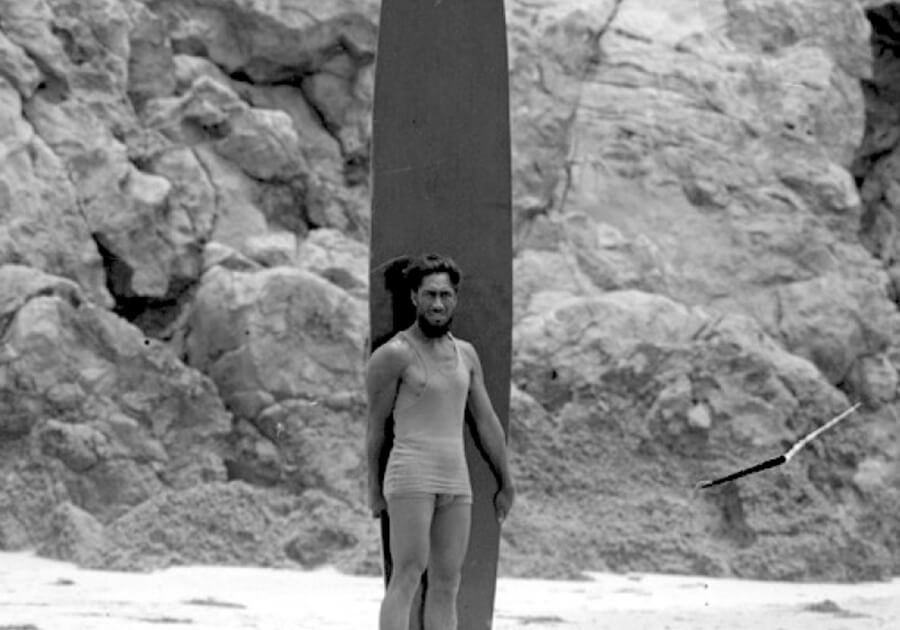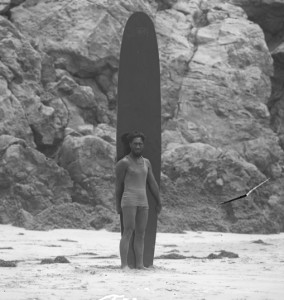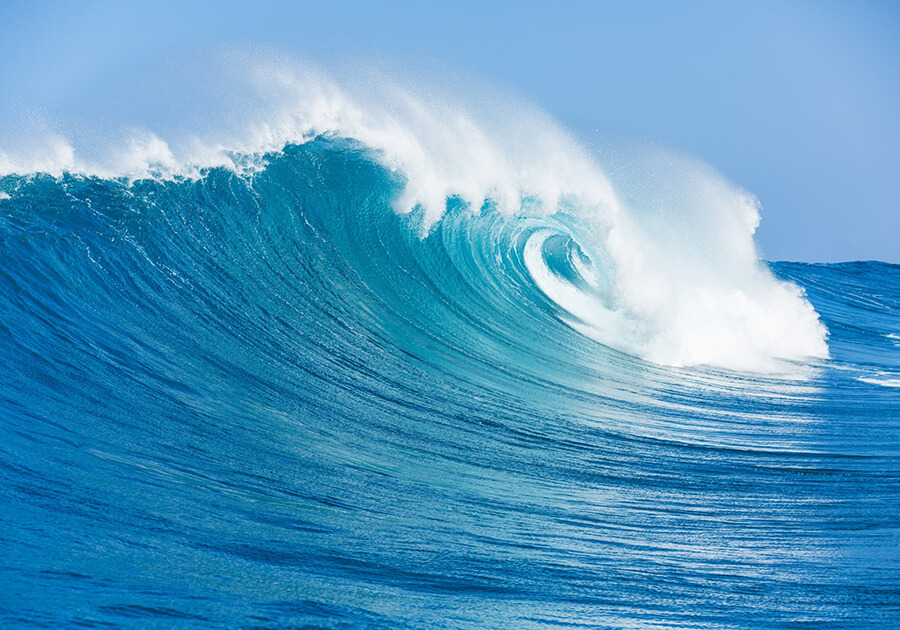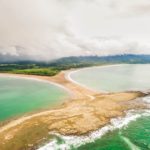Imagine you are an archeologist and you are excavating an ancient site when you stumble on a piece of pottery 3000 years old and there on the side is a picture of a man surfing. Cowabunga, dude!
Surfing goes way back, back before written language, back to the very beginning. If you think about it, it’s one of the most obvious of sports. What is body surfing but plunging ahead into a wave and letting it carry you? Hey, that’s even easier than swimming. It’s not much of a leap to think of putting a board between you and the wave for purposes of riding. And then standing up on the board? Hello?
Enter the Duke
Maybe it was because immersing yourself in the cold waters of the North Sea was an unpleasant idea at any level, but the Europeans came late to the whole concept. It wasn’t until 1769 that Europeans mariners first witnessed happy natives shredding the curl in the Hawaiian Islands and sent word back to the motherland that something rad was going on.
The Hawaiians were all about surfing. They even incorporated it into their religion. Priests helped build the surf boards and then prayed to the gods to bring them tasty waves. I know a few dudes who would gladly sign up for that Sunday school.
In 1912 a US Olympic swimmer by the name of Duke Kahanamoku, a Hawaiian, began to expose the world to surfing. Up until that time it had remained mostly confined to Hawaii and the Polynesian Islands, so when the Duke started demonstrating it in the United States and Australia, people gasped.
Gidget and the Beach Boys
It’s no surprise that someone so cool should end up in Hollywood. Yep, Duke ended up in the movies, working as a character actor and taking small roles. While he was in Southern California in the 1920’s his followers gave birth to a small, fledgling surf culture. He eventually moved back to Waikiki, but the surf culture remained, taking root along the coast from Malibu to Huntington Beach.
In the early 1960’s the hit movie Gidget awakened thousands of restless teenagers to the idea of riding the waves. The new craze got a boost from the emergence of surf music which saw its greatest exemplars in the Beach Boys who sent hit after hit rocketing up the charts. Before long surfing was everywhere, from the rocky coasts of Great Britain to the far flung reaches of South Africa.
Costa Rica Rising
In the 1990’s veterans surfers weary of the crowded conditions on the beaches of Southern California discovered pristine waters, epic waves and uncrowded beaches on the western coast of Costa Rica. Small, often primitive surf camps began popping up from Dominical to Uvita and all along the Pacific coast.
Today those surf camps are the villages and towns that form a necklace of surf communities along the west coast of Costa Rica. And while plenty of other attractions bring visitors to the area today, surfing remains one of its main draws.
And to think that it all started 3000 years ago! Surfing is deep, man. It’s primo!
Pura vida!










